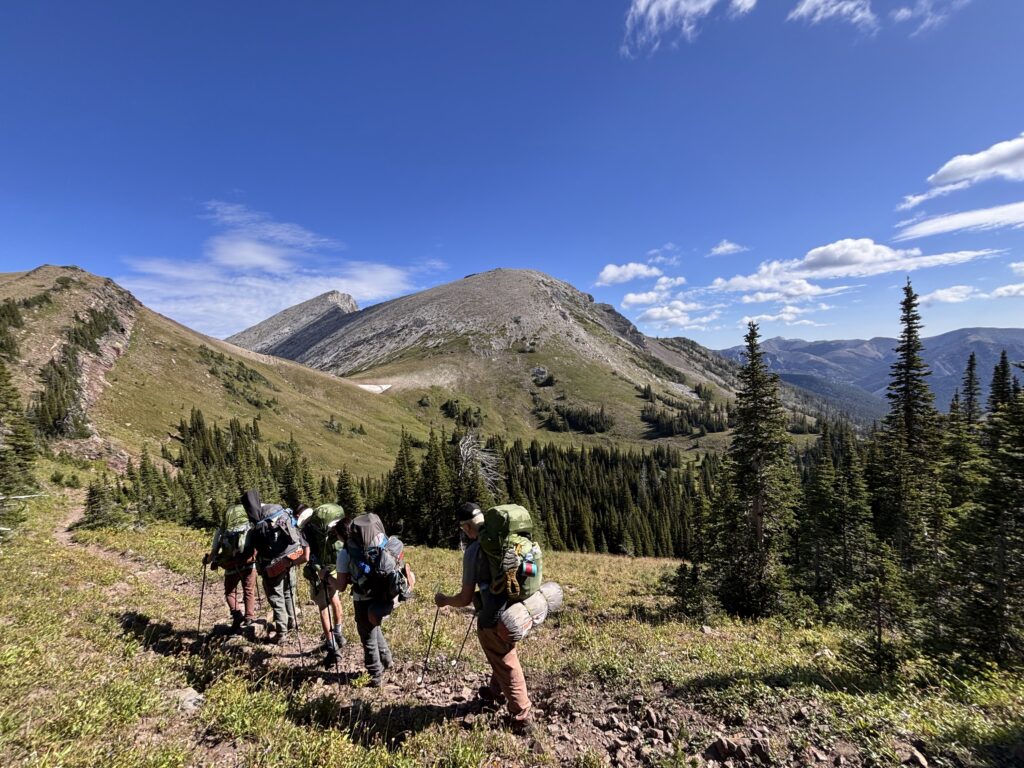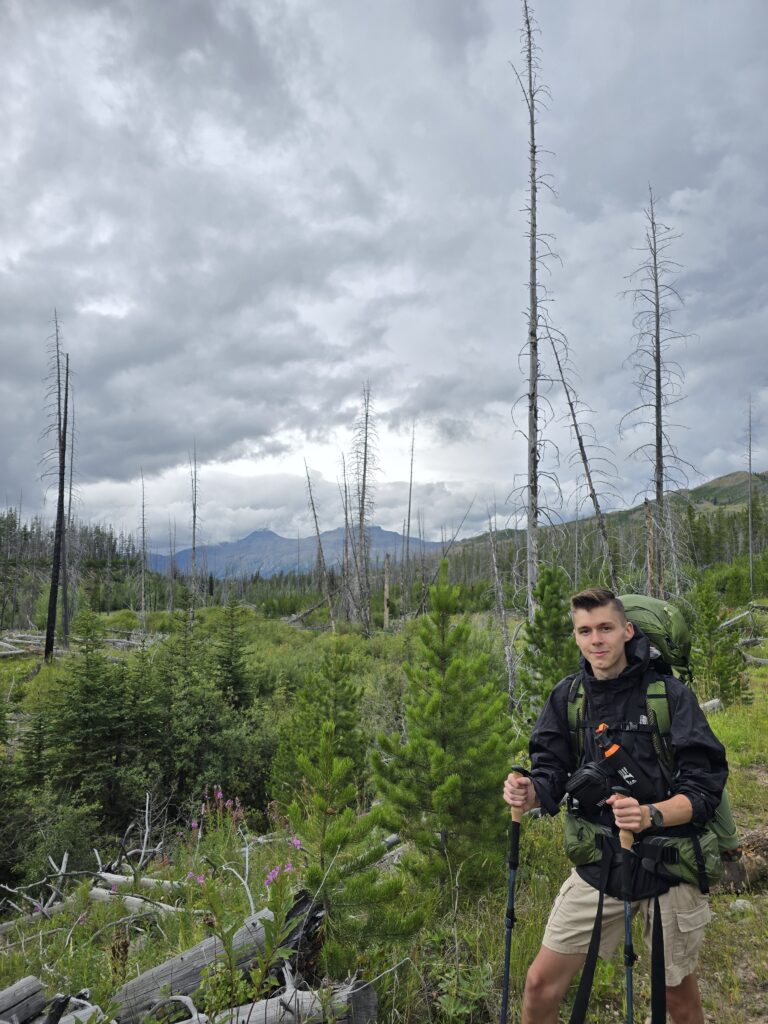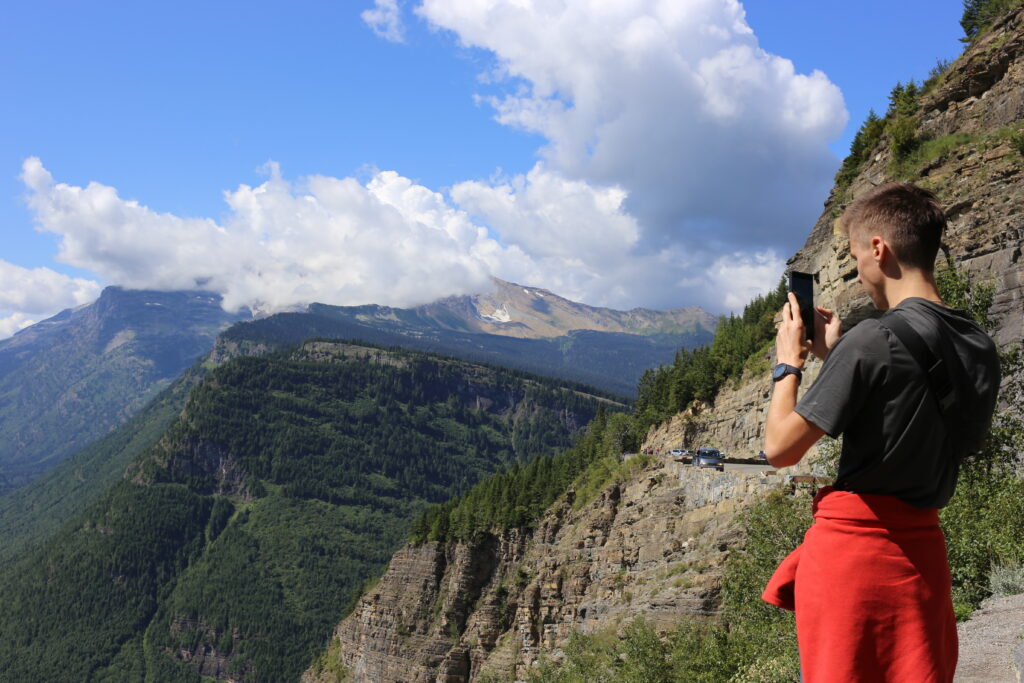Hello! My name is Nikodem Sienczewski, and I am an upcoming Junior at the University of Wisconsin-Madison majoring in Environmental Studies and minoring in Archaeology. I grew up most of my life in the Windy City of Chicago, Illinois having interests of studying astronomy and observing the night skies. After graduating high school in 2023, I started pursuing my interests as studies at the University of Wisconsin-Madison until recently, when I decided to switch my major to Environmental Studies and minor to Archaeology to try learning something new and head in a new direction to see where that leads me.

I first got introduced to the Wild Field Rockies Institute (WRFI) during my fall semester of my sophomore year in 2024. Inspired by the idea of being able to learn and explore new parts of the country through front- and backcountry backpacking interested me to sign up for this opportunity (Environmental Ethics course) which, as of the second to last day of the program, has been an amazing three weeks that I got to spend with a great group. The course explores and compares environmental ethics to the challenges we face with climate change whilst getting to explore northern portions of Montana including Glacier National Park, Bob Marshall Wilderness, and the Badger-Two Medicine Area.

Glacier National Park stood out as one of my top moments that I got to experience with the group throughout the entire trip. From learning about the history since the establishment of the park in 1910 to exploring the countless hiking trails one can take to even seeing a number of glaciers, the park is a must-see stop. Within the few days that we got to explore the park itself I got to observe many windy roads running throughout the park surrounded by beautiful mountains, glaciers (including the most known Jackson), waterfalls, and streams. I got to enjoy hiking trails that extend upwards to 13 miles in length (taking a good few hours to complete) alongside spotting a variety of wildlife (grizzly bears, mountain goats, and marmots). In general, there are a lot of great options to choose from when visiting the national park either for the first time or a second. Stopping by the visitor centers (St. Mary’s) is a must if you’re someone who is interested in learning about the history of the park and its land alongside being able to shop for souvenirs (which is always one of my highlights when visiting national parks). During the two days we got to explore the park, we decided to sightsee most of the park by driving through both sides of the continental divide. One portion of the park is more tropical and wet whilst the other is more dry and warm. What surprised me at some points during the trip was seeing clouds at lower elevations than the peaks of certain mountains we got to observe. Apart from that I also was surprised to see how well I got through our 9 mile hike to Piegan Pass that we ended up doing in half of the second day – observing many great views of the valleys in the park alongside wildlife and plants. During our hikes I always thought about how an ice age can create such valleys that shape the park today. An important lesson that I learned is to make sure to wear sunscreen since the UV radiation can get higher at higher elevations.

Moving over to the history of the national park, Glacier was first established in 1910 encompassing two mountain ranges which highlights the sceneries and the glaciers. The landscapes we see today were formed by the latest Ice Age alongside erosion and mountain uplift (the physical process of how mountains and mountain ranges form). Since the early stages of this land the glaciers helped shape the landscapes, but due to climate change, the number of glaciers has shrunk to around two dozen, while not affecting the biodiversity of the diverse plants and animals we can spot today. Glacier National Park, among several other national parks across the country, used to be inhabited by Indigenous tribes like the Blackfeet, for example, who were forced to relocate and give up a portion of the land that makes up Glacier National Park today. Today the Blackfeet co-manage the park and its preservation through their traditional practices and knowledge of their ancestral land alongside working with agencies like the National Park Service (NPS), which helps ensure the tribe’s voices are heard when it comes to knowing the history and management of the land today. Knowing that Indigenous people once owned greater amounts of land here in the United States before the government took over the land and reformed it into industrial purposes, should our government give back the management to the Indigenous people? I think the question can be a little bit complicated given the past history of the relationship between the US government and the Indigenous tribes that inhabit the country today. Instead of giving back full management of the national parks to the people (which could cause more problems with settlers) it could be a better option to co-manage these lands to better our relationship with the Indigenous people whilst allowing them to connect back to their ancestral land. Our environment today relates back to the idea of the “wilderness” meaning untouched or pristine. Indigenous people have greater knowledge and connection to these lands, therefore, being able to co-manage with them is the best option to tackle climate change with the wilderness playing an important role of mitigating carbon emissions in our atmosphere without any human intervention or action.
Apart from exploring and learning a lot about Glacier National Park, I enjoyed a relaxing 3-night and 7-night backpacking trip in the back country being away from using technology and seeing others which was a great way to take a break and focus on what we did including our hikes, discussions, and readings. Being able to listen to three guest speakers throughout our three weeks was also a great way to learn more about the people who reside here in Montana and what they do for a living from working as a wildlife biologist to being a part of the Blackfeet and how that connects to what we have learned along the way. With our last day coming up tomorrow, I’m excited to see how our final presentation in Missoula will end up getting to speak and share about our experiences in front of an actual crowd. Thank you for reading my first blog!
